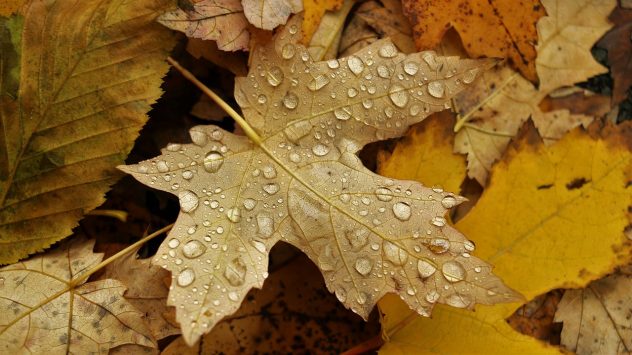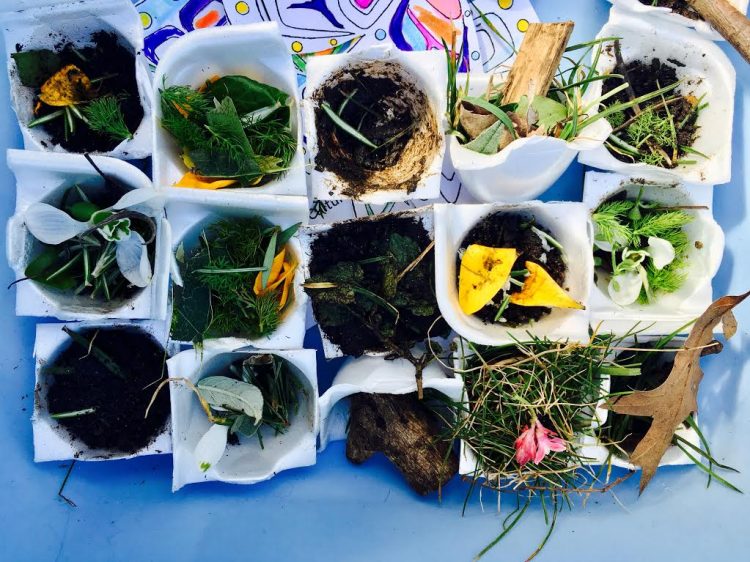 By Andrea Leeburn (MEd in IE/French Immersion Kindergarten Teacher)
By Andrea Leeburn (MEd in IE/French Immersion Kindergarten Teacher)
Imaginative Ecological Education (IEE) aims to engage body, emotion and imagination in the natural context in which students live and learn (Judson, 2015). IEE proposes three principles to support this aim. The second principle, Activeness, involves tapping into the body’s emotional and sensory tools in learning such as the physical senses of smell, touch, hearing, sight and taste (Judson, 2015, p. 23). As part of my Action Research for my MEd IE Masters degree, I designed three activities aimed to engage my kindergarten students’ physical senses in the local, natural context.
In this activity, to draw awareness to their sense of smell, I gave each of my students an individual eggcup labelled with their name. I explained that they would be making their own personal brand of nature perfume by combining small pieces of nature they find on the ground (WildBC, 2009).
There was a palpable buzz amongst the class as they anxiously waited for me to pass out their cup. Some initially hesitated, seeming unsure what I was asking them to do. One boy grabbed a handful of grass and shoved it into his eggcup and held it up to me. I brought the cup right up to my nose, breathed in deeply and exclaimed “Mmmmmm! I LOVE the smell of fresh grass. I wish I could bottle up this scent and wear it everyday!” After witnessing this interaction, they were all coming up to me every 30 seconds asking me to smell their concoction with their latest addition of mud or pine needles. Small eggcups held by wide-eyed 6-year-olds were being pushed up to my face left, right and center as they eagerly awaited my reaction. Someone discovered a rosemary bush and they were all fascinated by the strong scent of the leaves. I explained to them that many people also enjoy the taste of rosemary and use it in their cooking. They were all keen to add a sprig or two to their mixture.

They were engaged in this activity for 20 minutes, running around like mad scientists trying to find the perfect addition to their concoction and asking their friends to smell. Some students took little sticks and discovered that when they crushed or ripped the leaves, the smells got stronger. After 25 minutes or so, I gave them the option of free play and even my most rambunctious, Star-Wars-and-Lego-playing group of boys continued on making their perfect perfume.
As we were walking back to the school, one of my students was walking alongside me and said,
“My mom is going to love this perfume. My whole family loves nature. I love nature. I go on hikes with my friend.”
I replied, “I love nature too.”
Reference
Judson, G. (2015) Engaging imagination in ecological education: Practical strategies for teaching. Vancouver, B.C.: UBC Press.
WildBC. (2009). Get Outdoors!: An Educator’s Guide to Outdoor Classrooms. Victoria: WildBC.

